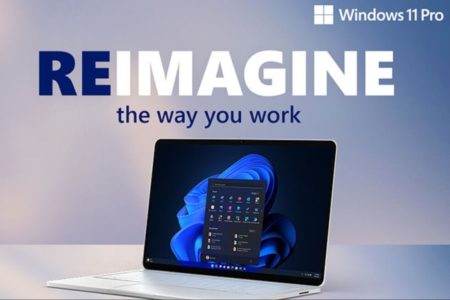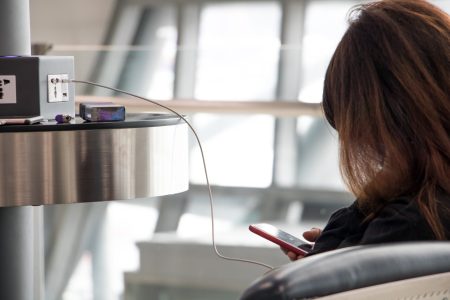El Pollo Loco Holdings, Inc. (LOCO) has reported a modest increase in total revenue for the second quarter of 2024, with a 0.6% rise to $122.2 million, driven by system-wide comparable restaurant sales growth of 4.5%. The company has seen an improvement in restaurant-level margins by 170 basis points and is focusing on its five strategic pillars, which include digital-first initiatives and national expansion. Despite a decrease in company-operated restaurant revenue due to refranchising, franchise revenue increased significantly. El Pollo Loco also highlighted its commitment to reducing build costs for new units and improving labor productivity to manage rising wage inflation.
Key Takeaways
- El Pollo Loco reported a 4.5% increase in system-wide comparable restaurant sales.
- Restaurant-level margins improved by 170 basis points.
- Total revenue for Q2 2024 rose slightly to $122.2 million.
- Company-operated restaurant revenue decreased, but franchise revenue grew by 15.1%.
- The company is focusing on digital initiatives, unit economics, and national expansion.
- New unit build costs are expected to be reduced to around $1.8 million.
- Wage inflation is expected to be between 12-13% for company-owned locations in 2024.
- The rollout of kiosks has been delayed, aiming for completion by year-end.
- GAAP net income was reported at $7.6 million, with adjusted net income at $7.8 million.
Company Outlook
- El Pollo Loco plans to continue its focus on digital-first business and driving unit growth.
- System-wide comparable store sales for the third quarter are projected to increase by 1.9%.
- The company is adjusting its development and remodel plans to incorporate cost-saving design elements from its new prototype.
Bearish Highlights
- Company-operated restaurant revenue decreased by 1.5% to $102.3 million due to refranchising.
- The company has reduced its development and remodel guidance for the year.
Bullish Highlights
- Franchise revenue increased by 15.1% to $11.7 million.
- The company is investing in its supply chain and improving its value proposition.
- El Pollo Loco is focused on expanding margins through labor productivity and cost reduction.
Misses
- The rollout of kiosks for suggestive selling has been delayed but is expected to be completed by the end of the year.
Q&A Highlights
- There was no significant difference in performance between California and other markets.
- The company is pleased with its quarterly results and optimistic about future opportunities.
El Pollo Loco’s second-quarter performance reflects a company in transition, focusing on strategic growth and operational efficiency. With the introduction of new value offerings and a commitment to maintaining favorable margins, the company is adapting to the challenges of wage inflation and market dynamics. The delay in kiosk deployment is a minor setback in the context of overall positive trends, such as the increase in franchise revenue and the improvement in restaurant-level margins. By hiring a Chief Development Officer and developing a new unit prototype, El Pollo Loco is laying the groundwork for sustainable expansion and profitability.
InvestingPro Insights
El Pollo Loco Holdings, Inc. (LOCO) has demonstrated a strategic approach to growth and efficiency, as reflected in the company’s recent financial performance and management actions. Here are some insights based on the latest InvestingPro data and tips:
InvestingPro Data highlights that El Pollo Loco has a market capitalization of $353.6 million and trades at a P/E ratio of 13.99, which adjusts to 14.65 based on the last twelve months as of Q1 2024. This valuation metric suggests a reasonable price for the company’s earnings, especially considering the PEG ratio of 0.51, which indicates the stock may be undervalued relative to its earnings growth potential.
Moreover, El Pollo Loco’s revenue for the last twelve months as of Q1 2024 stands at $470.29 million, with a slight decrease of 0.87%. Despite this, the company has managed a gross profit margin of 20.56%, which is a testament to its ability to maintain profitability amidst market challenges.
InvestingPro Tips provide additional context to the company’s strategic moves. Management’s aggressive share buybacks signal confidence in the company’s future, aligning with the InvestingPro Tip that two analysts have revised their earnings upwards for the upcoming period. The company’s strong return over the last three months, with a price total return of 38.14%, also indicates robust market performance, reinforcing the positive sentiment around the stock.
It’s worth noting that while El Pollo Loco does not pay dividends, which may be a consideration for income-focused investors, the company is expected to be profitable this year, as per analyst predictions.
For readers interested in a deeper analysis, there are additional InvestingPro Tips available, including insights into the company’s liquidity position and the significance of its recent price uptick over the last six months. To explore these further, visit the dedicated InvestingPro page for El Pollo Loco: https://www.investing.com/pro/LOCO.
Full transcript – El Pollo Loco Holdings Inc (LOCO) Q2 2024:
Operator: Good day, ladies and gentlemen, and thank you for standing by. Welcome to the El Pollo Loco Second Quarter 2024 Earnings Conference Call. [Operator Instructions] Please note that this conference is being recorded today, August 1, 2024. And now, I would like to turn the conference over to Ira Fils, the company’s Chief Financial Officer. Please go ahead, sir.
Ira Fils: Thank you, operator, and good afternoon, everyone. By now, everyone should have access to our second quarter 2024 earnings release. If not, it can be found at www.elpolloloco.com in the Investor Relations section. Before we begin our formal remarks, I need to remind everyone that our discussions today will include forward-looking statements, including statements related to our growth opportunities, strategic and operating initiatives, expectations regarding sales and margins, potential changes to our product platforms, capital expenditure plans, expectations regarding kiosk rollouts, the ability of our franchisees to drive growth, expectations regarding commodity and wage inflation, remodel plans and our 2024 guidance, among others. These forward-looking statements are not guarantees of future performance, and therefore, you should not put undue reliance on them. These statements are also subject to numerous risks and uncertainties that could cause actual results to differ materially from what we currently expect. We refer you to our recent SEC filings, including our Form 10-K for the year ended 2023 previously filed as well as our Form 10-Q for the second quarter to be filed, for a more detailed discussion of the risks that could impact our future operating results and financial condition. We expect to file our 10-Q for the second quarter of 2024 tomorrow. We encourage you to review that document at your earliest convenience. During today’s call, we will discuss non-GAAP measures that we believe can be useful in evaluating our performance. The presentation of this additional information should not be considered in isolation or as a substitute for results prepared in accordance with GAAP, and reconciliations to comparable GAAP measures are available in our earnings release, which is available in the Investor Relations section of our website. With respect to the restaurant contribution margin outlook we will be providing on today’s call, please note that we have not provided a reconciliation to the most directly comparable forward-looking GAAP financial measure because, without unreasonable efforts, we are unable to predict with reasonable certainty the amount of or timing of non-GAAP adjustments that are used to calculate income from operations and company-operated restaurant revenue on a forward-looking basis. Now, I would like to turn it over to our CEO, Liz Williams.
Liz Williams: Thank you, Ira, and good afternoon, everyone. I am proud of what we have accomplished during the second quarter as we delivered 4.5% increase in system-wide comparable restaurant sales, driven by our iconic Fire-Grilled Chicken, our renewed focus on everyday value and our consistent operations. Our restaurant-level margins were 18.6%, a 170 basis point improvement versus the second quarter of 2023, which can be attributed to our ongoing operational focus. While we are proud of these achievements, we are just getting started in growing our beloved brand. As you know, it has been a challenging macroeconomic environment for the restaurant industry and consumers as a whole in the recent months. While some may see this as an obstacle, we see this as an opportunity to showcase to our guests that El Pollo Loco is one of the unique restaurants that can offer portable, craveable, fresh food, all for good value and with the convenience of fast service. And don’t just take our word for it. Last month, we were named the nation’s #1 Best Restaurant for Quick, Healthy Food by USA Today as voted on by consumers across the country, beating out several well-known larger brands. It is recognition like this that reinforces our differentiated consumer value proposition that makes us primed for growth. As we navigate the second half of 2024, let me update you on our five strategic pillars. As a reminder, these are: brand that wins, to be the flavorful, affordable, better-for-you chicken leader; hospitality mindset, to show up consistently and with a hospitality mindset; number three, digital first, to become a digital-first business in service of improving the customer experience; number four, to deliver winning unit economics; and number five, to drive unit growth again with national expansion. Let’s start with brand that wins. El Pollo Loco sits at the intersection of chicken and Mexican, two of the fastest-growing categories. We are squarely focused on being known for the best chicken in the limited-service restaurant sector by bringing thoughtful innovation and affordable options back into the brand. To that end, we recently relaunched our fire-grilled burritos with handmade guacamole included in all three at a very attractive price point of $9.99 and $8.99 for our Loco Rewards members. As value perceptions across our entire industry are at a crucial point right now, our burritos with delicious ingredients like our new creamy chipotle sauce or our signature, queso blanco, reinforce the promise that you can fill up on really good food for a good price at El Pollo Loco. The best part is that these burritos were designed to maintain our favorable margins. Early feedback has been positive, and we look forward to providing you with additional updates later this year. As we launched our new burritos, we also brought back for a limited time or double chopped salads with chicken, and we reintroduced shrimp, following the success we saw with shrimp in the first quarter. While premium priced, these fan favorites are affordable versus the fast-casual alternatives in the market, and they provide healthy options for consumers on the go. We also continued to test other value with our fire-grilled deal, including our ala-carte and combo offerings in the $3 to $7 price range. With classics like our Original Pollo Bowl and Tacos Al Carbon. I look forward to sharing more with you in the upcoming months as we learn more from our tough markets. Finally, as we sharpen our brand positioning, we look forward to reinforcing El Pollo Loco as genuinely delicious food that not only taste good, but also makes you feel good. We have a unique opportunity to own this space in QSR. Turning now to our digital-first pillar. While we believe $9.99 is already a very competitive price point on our menu, our Loco Rewards loyalty members have access to even better deals like $8.99 burritos already mentioned. Our program powered through our Loco Rewards app is the best place for these deals at EPL. In this environment where value is key to the consumer, we will continue to ensure our digital assets offer value that drive trial and repeat business. Turning to kiosks. When we first began the rollout of kiosks late last year, our timeline was accelerated to help offset the minimum wage increases that were forecasted in our California markets. When we stepped back and realized the high-touch training and customer service that was needed to drive sustainable customer adoption, we decided to better pace and sequence this timeline to ensure our guest experience remained a priority. In parallel, our team has been exploring additional labor productivity initiatives throughout our P&L to offset any gap from kiosk savings. As such, we now expect to complete our company kiosk rollout by the end of the year. This extra time has also enabled some technology enhancements that help our operational and customer experience, like accepting gift cards and discounts. We believe this has been the right decision for the success of kiosks within El Pollo Loco or the long term. We remain excited by the future potential of kiosks and look forward to keeping you updated as the year goes on. The next pillar I want to touch on is delivering winning unit economics. While we are pleased with our margin performance during the quarter, we are excited about the roadmap that we are building for our future. We are looking across the P&L from labor productivity to cost of goods sold to repair and maintenance and utilities and all other controllable expenses. We have a dedicated working team focused on these initiatives, led by recently hired new leaders guiding our supply chain, our operational services and our culinary functions. With their fresh perspective and our talented teams that have been with El Pollo Loco for many years, we are approaching our cost savings initiatives methodically to ensure our high-quality food and the guest experience only improve. As we unlock this potential, we expect to start seeing the benefits in the fourth quarter of 2024 and offsetting the investments we are making in this initiative. Through the work we’ve done thus far and with the roadmap for the next year, we believe there is an opportunity to approach 18% restaurant contribution margins in 2025, giving us increased confidence in our ability to return to consistent 18% to 20% margins over time. Lastly, let’s talk about driving unit growth. As I mentioned on our last call, our current prototype build costs are simply too high to drive consistent long-term franchise growth. To that end, we have made good progress on value engineering and reducing the cost of our prototype while at the same time modernizing our brand image. I have increased confidence in our ability to reduce our new unit build cost to around $1.8 million. We are just finishing up the design of the prototype, which will have a more relevant image that bridges our current design to our future. In the next few months, we will begin construction on a company unit with the new prototype and reduced cost model. We look forward to sharing further updates as we move through the year. Combined with the development incentive that we launched a few months ago for our franchise partners, we are quickly laying the foundation to ignite development growth in 2025. Wrapping up development, I am pleased to introduce Tim Welsh as our Chief Development Officer. Tim joined the team in early June and has brought with him over 20 years of development and franchising experience in growth strategies, franchise sales, prototype development, remodel programs and facilities maintenance. From design to facilities maintenance to restaurant equipment, Tim has already had an impact on many areas of our cost engineering and design initiatives. His experience is the perfect fit for El Pollo Loco as we work together with our franchise partners to drive unit growth and become a national brand. I want to close by talking about our hospitality mindset pillar and the underpinning priority of culture. We are committed to attracting, hiring and retaining top talent and driving a culture of accountability. As I have gotten to know the El Pollo Loco team better in my last six months, I have been so impressed with our restaurant culture. Because of the strength of our leaders and the passion of our team members and franchise partners, we have some of the lowest turnover in the restaurant industry in both company and franchise restaurants. As our team is focused on updating our tools and standards to drive speed, accuracy and hospitality, we are confident that our culture will enable some quick operational wins. We look forward to sharing more in the future. In summary, we believe we have the right building blocks for long-term success. We are reinventing value by focusing on our key differentiator, citrus-marinated fire-grilled chicken. We have the right leadership in place to reignite our growth plan and return El Pollo Loco to historically strong margin performance, and we are fortunate to have such a strong support center team and over 4,300 amazing team members in our restaurants and an incredible franchise system. Together, all of this is ready to capture the growth ahead. With that, let me turn the call over to Ira for a more detailed discussion of our second quarter financial results.
Ira Fils: Thank you, Liz, and good afternoon, everyone. For the second quarter ended June 26, 2024, total revenue increased 0.6% to $122.2 million compared to $121.5 million in the second quarter of 2023. Company-operated restaurant revenue decreased 1.5% to $102.3 million from $103.9 million in the same period last year. The $1.6 million decrease in company-operated restaurant sales was primarily driven by a $5.5 million decrease in revenue from the refranchising of 19 company-operated restaurants to existing franchisees in prior quarters, offset by a 3.2% increase in company-operated comparable restaurant sales and additional sales from restaurants opened during or subsequent to the second quarter of 2023. The increase in comparable restaurant sales included an 8.8% increase in average check size and an approximately 5.2% decrease in transactions. During the second quarter, our effective price increase versus 2023 was 7.8%. Franchise revenue increased 15.1% to $11.7 million during the second quarter, driven by a 5.3% increase in franchise comparable restaurant sales as well as four new franchise restaurant openings during or subsequent to the second quarter of 2023 and the 19 refranchise restaurants I’ve just mentioned earlier. Looking ahead, third-quarter-to-date sales through July 30, 2024, system-wide comparable store sales increased 1.9%, consisting of a 0.3% increase in company-operated restaurants and a 2.8% increase in franchise restaurants. Our quarter-to-date trends reflect two major factors. First, the impact of the July 4 shift, and second, the impact of a mismatch and LTO timing relative to last year. As we’ve moved past these transitory timing issues, we’ve already seen trends start to normalize and expect to see comparable trends similar to what we achieved in the second quarter for the majority of the remainder of the third quarter. Turning to expenses. Food and labor costs as a percentage of company restaurant sales decreased 220 basis points year-over-year to 25.2% due to higher menu prices and lower discounting, partially offset by slight commodity inflation of approximately 2.7%. We expect commodity inflation to be a manageable 2% to 3% for the full year 2024. Labor and related expenses as a percentage of company restaurant sales increased 100 basis points year-over-year to 32.1%. An increase in wages was partially offset by higher menu prices and better operating efficiencies, primarily driven through improvements in labor deployment and labor scheduling, especially during open and closing periods. Labor wage inflation during the second quarter was approximately 15% for all our company-owned locations, driven by wage inflation in our California restaurants of approximately 17% as a result of the April 1, California $20 minimum wage increase for QSR restaurants. For the full year 2024, we expect wage inflation between 12% and 13% for all our company-owned locations. Occupancy and other operating expenses as a percentage of company restaurant sales decreased 50 basis points year-over-year to 24.1%, primarily due to the leverage gained on the same-store sales increase, combined with the sale of lower volume locations to existing franchisees in the prior year. Our restaurant contribution margin for the second quarter was 18.6% compared to 16.9% in the year-ago period. For the full year 2024, we are now expecting our restaurant contribution margin to be in the 16% to 17% range, an increase from our prior expectation of 15.5% to 16.5%, including the third quarter of 24% in the 15% to 16% range. We are pleased with the progress we are making in our labor improvement initiatives. And as Liz mentioned earlier, we are continuing to focus on identifying additional savings and efficiencies across the P&L as we continue to improve restaurant level margins. General and administrative expenses increased 50 basis points year-over-year to 9.6% of total revenue. The increase for the quarter was primarily due to an increase in estimated management bonus expense and executive transition costs. During the second quarter, we recorded a provision for our income taxes of $3.2 million for an effective tax rate of 29.3%. This compares to a provision for our income taxes of $2.7 million and an effective tax rate of 27.9% in the prior-year period. We reported GAAP net income of $7.6 million or $0.25 per diluted share in the second quarter compared to GAAP net income of $7.1 million or $0.20 per diluted share in the prior-year period. Adjusted net income for the quarter was $7.8 million or $0.26 per diluted share compared to adjusted net income of $8 million or $0.23 per diluted share in the second quarter of last year. Please refer to our earnings release for a reconciliation of non-GAAP measures. Turning to development. We are modestly reducing our development and remodel guidance for the year. This enables us to incorporate design elements and cost savings from our new prototype and a greater portion of the system more quickly and thus better setting us up for success over the long term. During the quarter, our franchisees opened one new restaurant in California, and we sold one company location to an existing franchisee. In regards to remodels, during the second quarter, we completed two company-operated restaurant remodels and 17 franchise restaurant remodels, bringing our total completed remodels for the year to five company restaurants and 28 franchise restaurants. For the full year, we expect to complete a total of 10 to 12 company remodels and 35 to 45 franchise remodels in 2024. Turning to liquidity. As of June 26, 2024, we had $87 million of debt outstanding and $10.5 million in cash and cash equivalents. Subsequent to the end of the quarter, we paid down an additional $4 million on our revolver, resulting in $83 million of debt outstanding as of July 31, 2024. On May 29, 2024, the company repurchased approximately 1.5 million shares for $15 million under a stock repurchase agreement with FS Equity Partners and FS Affiliates. Additionally, during the second quarter, we repurchased approximately 203,000 shares of stock for approximately $2 million, leaving about $4.2 million remaining under our current share repurchase authorization as of June 26, 2024. Finally, based on our results to-date, we would like to update the following guidance for 2024: the opening of two company-owned restaurants and four to five franchise restaurants; capital spending between $24 million and $26 million; G&A expenses between $45 million and $47 million, excluding one-time costs; and an adjusted income tax rate of 27.5% to 28%. This concludes our prepared remarks. We’d like to thank you again for joining us on the call today. And we are now happy to answer any questions that you may have. Operator, please open the line for questions.
Operator: [Operator Instructions] Our first question comes from the line of Jake Bartlett with Truist Securities. Please go ahead.
Jake Bartlett: Great. Thanks for taking the question. My first one was just on underlying consumer demand, underlying restaurant demand. Your same-store sales obviously great in the quarter itself, a little volatile as the promotions have kind of rolled off and then rolled back on. How do you interpret what the underlying demand is? Do you feel like it’s stabilizing, still maybe deteriorating a bit, maybe improving? What’s your characterization of your consumer right now?
Liz Williams: Thanks for the question, Jake. And I’ll start and then I can pass it over to Ira. Pretty much all of those characteristics you just mentioned, we’re seeing a lot of that noise in the data. When you look at — as we entered into Q3, we have a lot of factors of our own that also clouded the data somewhat. So, we have a lap that was mismatched with last year when we started our LTO this year versus where we started last year, which always create some noise. And then, we also made a strategic decision earlier this year to reduce the amount of discounting that we were doing with our rather — it’s a bit of an older format of discounting with our FSIs or our coupon drops. And those decisions are made months in advance, you can imagine because it’s the old way of doing things where things are printed. And so, the discounting levels were less than they were last year, which now where we see — where we sit in value, you’d want them to be more. So, we’re, of course, changing that going forward. But that, of course, have impact. And then, when you layer in the 4th of July holiday, which I think what others have been saying, we saw that, too, people really adjusted their schedule more than just a day or two. And then, just the overall consumer softness. So, you put all that together, and I definitely am seeing that. But then, we launched — the good news about this business is we got out there. We just launched two new products. We relaunched our burritos with our guacamole — fresh guacamole included at $9.99 and $8.99. And then, on barbell strategy, so we did that on the value. And then, on the salads, we launched the [Double Chicken Chopped Salad] (ph) and have gotten a great response there. Even though that’s up at $11 to $12 price point, but it’s still value versus where fast casual salads are. So, we launched those, and we saw the traffic pick back up. So, I don’t know that I gave you any more clarity, but it’s definitely a mixed bag. Go ahead Ira.
Ira Fils: No, it was very much a mixed bag as you move through the month. The only thing I will add, and I mean it’s not a lot of data points, but this most recent week that we experienced, we did see a little bit of a return to where we had been earlier on in the year, specifically last quarter from a sales standpoint. So, we are optimistic as we move from the quarter that we still have nice sales momentum, but there was a lot going on in our July comp.
Jake Bartlett: Got it. And maybe if you could also just address regionality and how your stores in California are doing versus stores outside? We’ve heard a lot of different results in California, mostly kind of bad news, the consumer pulling back and traffic being really pressured in that market. Is that — was that your experience? Maybe the marketing experience outside of California is a little more representative of kind of maybe the underlying consumer itself, but any commentary there would be helpful.
Ira Fils: We didn’t see a whole lot of difference between the markets. I mean, I would say, marginally, there were some markets outside of California that was a little stronger, but I think in general, our — the comp that you see for us is pretty representative of the system.
Jake Bartlett: Okay. And last question, on the expansion of the margins, you’re really going from ’24 to ’25 to come. What is the main driver? It’s about — I think at the midpoint of about 150 basis points, which — is it right to think about labor as really the kind of the vast majority of the benefit would be coming through the labor line, or is it more broad-based than that?
Liz Williams: It’s going to be more broad-based than that. Certainly, labor productivity, we still think that there’s opportunity in those shoulder hours within some of the productivity we’re doing and then as we deploy kiosks, all of those will help. But then, we also have a very concerted effort on our cost of goods and some of our semi variable costs where we have put a dedicated effort, we’ve engaged a third party. We have some new talent leading our supply chain function and some of our other functions. And we’re just doing a very thorough look in the middle of the P&L and those other line items. And honestly, it just hasn’t been done in a couple of years, and it’s overdue.
Jake Bartlett: Great. I appreciate it.
Liz Williams: Thank you.
Operator: Thank you. Our next question comes from the line of Todd Brooks with Benchmark Company. Please go ahead.
Todd Brooks: Hey, thanks for taking my question, and congrats on strong results in a very choppy environment. So, well done.
Liz Williams: Thank you, Todd.
Todd Brooks: First question, just a follow-up on Jake’s question. Ira, you were talking about the regional performance and not seeing big discrepancies, but if we don’t look at it as the total same-store sales level, but we looked at it as more at the traffic level, kind of what’s the spread between what you’ve seen in California versus the non-California markets?
Ira Fils: Yeah. We definitely have seen a little more decline in California from a traffic standpoint than the outer markets because those are the markets that we’ve taken a little more price.
Todd Brooks: And I know that there’s been talk about that consumer kind of throwing up their hands and walking away in April and May, but if you look at your California traffic trends, are you seeing any evidence that this whole concept of “I’m just going to make my food at home, I’m not going to eat out?” There’ll be a point that people get tired of it and they figure out how to add some of these restaurant visits back into their routines and their budgeting. Are you seeing any improvement in California traffic trends relative to what you’re seeing in April, May with all the hype around the FAST Act of the price increases that were taken?
Liz Williams: Yeah. Not yet. So, what you’re hypothesizing is true. I think we’ve seen cycles like this where that has happened or the other thing that happens is gas prices come back down and they have a little bit of extra money. Now we’re about to go into back-to-school where people are spending money on that. What we are seeing is — and I think everyone’s seeing the trade-down effect. And so, we sit in the middle. So, we do get the trade down where people find going to casual dining too expensive or even I was talking about the salads, the fast casual salad is too expensive. So, instead of $15 to $16, they’re going to come to us for an $11 to $12 salad. And the salad we’re promoting right now has super-green lettuce, it has pepitas, queso fresco, of course, our plain-grilled chicken and we’re offering shrimp as well. So, when you compare it side by side with those salads on the upper end, I see a nice — we’re benefiting from trade down there, but then we give up some as people trade down on the lower end of QSR. So, as we’ve got the guys out there running the crazy couple of dollar for this or that, the consumer that’s really under pressure, sadly is going to trade down there. So, I think we’re seeing all of that right now.
Todd Brooks: Okay. Fair enough. And then, a final one for me, and it was encouraging to hear, but I think mix has been running negative for a few quarters now. And when you were giving us the components of same-store sales, it sounds like mix was up 100 basis points in the quarter. I guess, what drove the positive swing in maybe duration either due to easier compares on the mix front or what you’re doing on the menu, just thoughts on the ability to keep the mix in a flat to positive place? Thanks.
Ira Fils: Yeah. You’re right on it starts a little bit with what you talked about a little easier compares from a mix standpoint because last year is when we started to see the headwinds from a mix standpoint. So that’s a component of it. Another component of it for the quarter is, as we talked a little bit earlier is, we had less discounting during the quarter as well, which also helped from a mix standpoint. And then, we just continue to see some positive benefits in our core tostadas as we promoted that kind of at the end of last quarter and into this quarter, and we’re continuing to seeing that. And the quesadilla we added in the menu and the crunchy taco drive a little mix as well, the new crunchy taco, which we added earlier in the year, but that also helped drive a little mix as well.
Todd Brooks: So, you’re expecting durability of kind of positive mix for the next few quarters then Ira?
Ira Fils: Yes.
Todd Brooks: Okay, perfect. Thank you both. Appreciate it.
Liz Williams: Thank you.
Operator: Thank you. Our next question comes from the line of Andy Barish with Jefferies. Please go ahead.
Andy Barish: Yeah. Hey, guys. Just trying to tease out, I mean, the step down in food costs to low 25% is not something I think the brand’s ever seen. So I mean, pricing ramped up a little bit from 1Q. I’m just even thinking sequentially from 1Q to 2Q, but not that much, I guess, to account for 120 basis points sequentially. So, is it really the discounting and then the pulling back of the FSIs and then, did that have a direct effect, I guess, on the traffic numbers, and then, also as you turn — answer the last question, helping boost the mix? I’m just trying to kind of put together all those pieces of the puzzle.
Ira Fils: Yeah. So, it’s what you talked about. It is a little bit of discounting, obviously, the pricing. But it’s a little in the mix as we’ve shifted our mix a little bit from the bone-in chicken to the entree items, which have more leg and thigh meet, that’s a lower cost item. And so, we saw some mix in that lower our cost as well, which also helped drive a lower food cost during the quarter.
Liz Williams: And I would also add that I think we’re doing a better job of sourcing and we’ve invested in our supply chain team. And that’s, as I mentioned earlier, something we’re going to continue to do, but certainly just being more pragmatic across the board.
Andy Barish: Yeah. I want to dovetail on that if you could Liz, I think you said with some of the new leaders in those various areas that there’s some investments, I guess, with headcount and such, but that it starts to turn into a benefit in the 4Q and beyond as the part of the bridge to that 18% possibility in ’25. Am I hearing that correctly?
Liz Williams: That’s correct.
Andy Barish: Okay. And then I guess, just sort of an update in terms of where family meals stand in terms of your kind of everyday value proposition, how you kind of think about that business, how it’s been acting over the last few months?
Ira Fils: It has still remained a little bit under pressure. I mean part of that is because we’ve been promoting the entree items, but we have seen that — we have — as a percent of our mix, it has declined, but it is a very important part of our value proposition and our positioning because bone-in chicken is a big part of who we are.
Liz Williams: I would also say it remains one of our biggest value drivers. So, when you look at the discounting and the couponing, the family chicken is one of the highest redeemed. So, the person looking for the deal is usually that family chicken buyer. So, they are a bit more of the price sensitive. And that is also usually a dinner item. So, in terms of people — you’re less likely to trade out and bring your lunch to work or go to the grocery store to substitute lunch, but you might do that — you might find that substitution for dinner. So that’s also something which, again, is just forcing us to go back as a system to figure out what’s the right value equation, what’s the right deal to be offering.
Andy Barish: Okay. Got it. Thank you very much.
Liz Williams: You’re welcome.
Operator: Our next question comes from the line of Sharon Zackfia with William Blair. Please go ahead.
Sharon Zackfia: Hi. Good afternoon. I guess two questions. As we think about kind of the new unit prototype going down to $1.8 million buildout cost, I mean, what are you value engineering in that? Is it just a smaller box? Is there anything meaningful you’re doing in the kitchen to take out costs? And then secondarily, on the kiosks, the kind of slower role, are you going to have suggest selling now when you do have the kiosk roll out?
Liz Williams: Thanks for the question. I’ll answer the last one first. So, on the kiosk, definitely having this — or have the suggestive selling and the additional can add to your burrito, add or change things. So that is all enabled with the kiosk, and something that clearly drives check once you get the kiosk in and full adoption. So, we’re excited about that. We really just wanted to slow down a bit to make sure the customer service was — we’re known for our customer service, and we just — we didn’t want to be that environment where you walk in and you’re just greeted by screens. So, we saw that we had some room to take a beat and get it right and so we took that opportunity. And then, as it relates to the build costs, the savings is coming from all over. So, the first place I would point to is just reducing the size of the unit. Somehow we got into this world where we were building the units bigger than they needed to be. The dining room is bigger than they needed to be. And in this world where drive-thru and delivery, especially with the third-party aggregators, just continues to grow. We just didn’t need that big of a dining room. And so, we’ve reduced that to be about 2,200 square feet. So off of that, that’s the savings. On the equipment package, we were over specking the equipment package. We were building out some elements of the kitchen bigger than we needed to build as well. And this is an area where Tim, who just joined us leading development, he just came from an equipment provider. And just as he knows that world inside and out, and he’s already brought some great ideas, try this and try that. So, seeing savings there. And then, the other place is just taking time to be more competitive and to — in some of the design features, we were probably overdesigning the unit and some of the design features quite frankly, weren’t modern. And so, it was pretty easy to say let’s step back and rethink this and then redraw it and simplify and then go and rebid it. And so, we’ve seen some nice savings on the construction costs as well. So, it’s not one thing. It’s a list of many things that are going to get us to that $1.8 million.
Sharon Zackfia: Okay. Thank you.
Liz Williams: You’re welcome. Thank you.
Operator: Thank you. Ladies and gentlemen, we have reached to the end of today’s question-and-answer session. I would now like to turn the call back over to Liz Williams for closing remarks.
Liz Williams: I just wanted to thank everyone again for joining us today. We’re really pleased with the results for this quarter, and we look forward to speaking with you in the next couple of weeks and months ahead. So, thank you.
Operator: Thank you. The conference of El Pollo Loco has now concluded. Thank you for your participation. You may now disconnect your lines.
This article was generated with the support of AI and reviewed by an editor. For more information see our T&C.
Read the full article here









